Aurora borealis or often also called as Northern Lights are the visually stunning streams of light visible near the (magnetic) North pole of the Earth and are caused due to the collision between the charged particles arising from the Sun and the Earth’s magnetic field lines.
Aurora Borealis refers to these streams of light visible in the Northern poles of the Earth and are hence called “Northern Lights”. But these stunning display of lights aren’t limited only to the North Pole. The ones that are visible in the South Pole are called as Aurora Australis or Southern Lights.
Let us look at this through the lens of history.
According to an article by NASA published in 2006, the earliest mention of the aurora borealis were in a Cro Magnon painting in Southern France that is dated to be 30,000 years old.

Mentions of “strong lighting” and “fire and dragon in the sky” also come from China as early as 2,000 years ago. Many regard the earliest written documentation about aurora borealis to have come from China.
Romans and other stories from around Macedonia also mention about “display of light, bright and strong in the night” and can be deducted to have been about aurora borealis.
Myths
The Norse culture has an abundance of references that directly mention the northern lights.
Among the Norwegian Vikings, the Northern lights were known as reflections from the armors of Valkyries as they took dead warriors to Valhalla in preparation for Ragnarok.

The Sámi people of Sápmi region in northern Norway, Sweden, Finland, Murmansk believe that the northern lights are the souls of departed and shouldn’t be teased or poked and call these cosmic phenomenon as “Guovssahas”.
Tales from Finland where the Northern Lights are named as “revontulet” say that when foxes run across the land in winter they kick up snow flakes which are then illuminated as aurora borealis. Hence the name “revontuket” meaning “fox fire”.
In North America the myths around aurora often touch the subjects of death and spirits. Native Americans and Eskimo tribes believe that these were guiding lights for the souls of the dead and also a connection between the living and the departed. Inuit myths refer to aurora as spirits playing with the heads of walrus.
The scientific history of Aurora borealis
The name “Aurora Borealis” can be traced back to 1619 and a few years prior to Galileo and his disciple Guiducci who were noted to use the term for the northern lights. Galileo named it after Aurora, the goddess of dawn in Roman mythology and “Boreas” the Greek god of wind.
The credit for the first connection between aurora borealis and the magnetic field of earth goes to Anders Celsius (however it is a bit contested as he allegedly stole the conclusions from his student).
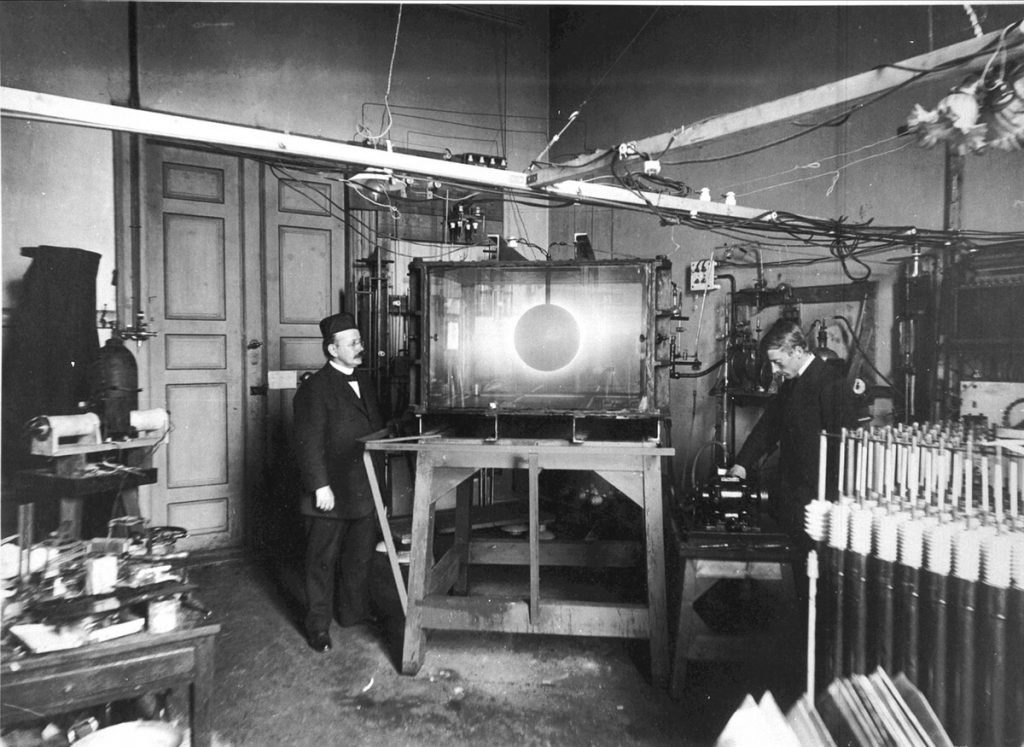
After centuries of mystery, Norwegian scientist Kristian Birkeland, the man who was nominated for the Noble Prize 7 times in his life, theorized that aurora borealis were caused due to the interaction between the super energized electrons emitted from the sunspots and Earth’s magnetic field. This was published in his “The Norwegian Auroral Expedition” in 1908 and 1913.
The violent and destructive phenomenon behind the beauty.
I personally take the beautiful show of lights on the skies of Earth’s poles that we lovingly call as Polar lights as an indication of how so many events, so many natural phenomenon, so many physical occurrences line up for life to thrive on Earth. You will soon understand why I say this.
Nuclear Fusion on Sun.
The source of the energy of the sun, like any other star, is nuclear fusion. Nuclear fusion is a process where two nuclei of low atomic masses combine to form a heavier nucleus. In the core of the sun, with a temperature of 15 million degree Celsius or 27 million degree Fahrenheit and a pressure of 3.84 trillion psi, the proton and proton from nearby Hydrogen nuclei combine and form Helium nucleus.
At the core, where the temperature and pressure are at their highest, the hydrogen and helium cease to exist in solid, liquid or gaseous form and get transformed into plasma. A plasma is a state of matter where substances exist in the form of free electrons and atomic nuclei.
Solar flare and Coronal Mass Elections
The formation of plasma in such tremendous quantity per second messes up with the magnetic field of the sun. The brute strength of the sun in the form of pressure and temperature pushes the magnetic field along with the energy and plasma outwards, throwing the energy, gases and charged particles like a tremendous and uncontrollable wave into the space. This is known as a solar flare.
At the core, where the temperature and pressure are at their highest, the hydrogen and helium cease to exist in solid, liquid or gaseous form and get transformed into plasma. A plasma is a state of matter where substances exist in the form of free electrons and atomic nuclei.

When a solar flare is backed up with even more massive ejection of plasma and magnetic field from the surface of the sun (known as corona), it is termed as Coronal Mass Ejection. These coronal mass ejections have been known to produce gas clouds that are larger than the sun itself!
Solar wind
These ejections from the corona of the sun have been known to catch at tremendous speeds creating a gale of wind which we call the solar wind. It takes 2 to 4 days for those solar winds to reach the Earth. Such solar winds with a tremendous amount of charged particles, plasma, and energy could easily wipe out the existence of life from Earth. But, we continue to exist.
The production of Aurora Borealis.
The crash
The polar lights are a result of the crash between the plasma carried in the solar wind and the Earth’s Magnetosphere. But, the solar winds occur quite often and we don’t see auroras quite often. It is because not every solar wind can produce lights.

In the case of Coronal Mass Ejection, when the solar winds are particularly powerful, the collision between these viciously powerful solar winds and the Earth’s magnetosphere results in the magnetosphere being stretched backward due to the onslaught of the powerful wave of particles. And just like a small stone in a stretched catapult, some of the particles in the solar wind are hurled towards the poles of the Earth.
The exchange of energy
Here at the magnetic poles of the Earth, these energized particles: electrons and protons from the sun come in contact with the neutral gaseous molecules that make up our atmospheres like Oxygen and Nitrogen. The energy from these particles is then transferred to the neutral atoms of the Earth’s Atmosphere.
The production of light
This is what happens when the oxygen and Nitrogen atoms get energy from the electrons and protons of the solar wind: their own electrons get excited and start jumping from one level to another resulting in the production of photons. These waves after waves of photons (light energy) is what we see in the skies as aurora borealis.

The colour of the light depends on the gaseous atoms that interact with the solar particles. The green and light red colors are caused by the excited oxygen atoms. The Nitrogen atoms are responsible for the blue and deep red colour. The stream of such colors resulting from the excited atoms is what we see in the sky.
The Earth is not the only planet where we can see auroras. Jupiter and Saturn by the virtue of their massive magnetic fields produce tremendous streams of auroras. Uranus also has auroras but instead of river-like streams, it has dots.
Now that we have answered what Aurora Borealis or Northern Lights let us skip to where to see them.
Where to see the aurora borealis?
If we had to give you a nice and technical answer we would say that there is something named the “Auroral Zone” which encompasses parts of Northern Scandinavia between the latitudes of 66°N to 69°N. This includes countries like Iceland, Finland, Norway, Sweden, Greenland and Canada.
Some auroral sightings have been made as down South as Honolulu and Singapore but these are very rare. The Auroral Zone includes the places that are closer to the Earth’s magnetic North pole and have the highest and most frequent appearances of the aurora borealis.
Every country lying in the Auroral Zone has a section of it’s tourism industry dedicated to serving people who travel from all parts of the world for a glimpse of the auroral lights which includes specially designed hotels just for this sky watching.
Iceland
Where to see them in Iceland?
In and around Reykjavik
Klambratún is one of the largest public parks in Reykjavik and may not seem like the ideal place to watch the Northern lights. But on a clear day, the trees around the park do a decent job of blocking the lights of the streets and you might just catch a glimpse. However, there are better places in and around Reykjavik to watch the Northern lights.

Grótta is one such place. It only lies a few kilometers away from downtown of the capital. The coastline and wilderness however will give you a feeling that you have traveled further than you actually have. During the day, it is filled with bird watchers and has exquisite views of the Northern Lights during the night.
Laugardalur lies in the outskirts of Reykjavík and is the place you want to go for sporting activities and physical recreational activities if you are staying in the capital. It offers you so many things to do along with immersing yourself in outdoor thermal pools which open upto 10 PM. This is an excellent place to see Northern Lights near the capital.
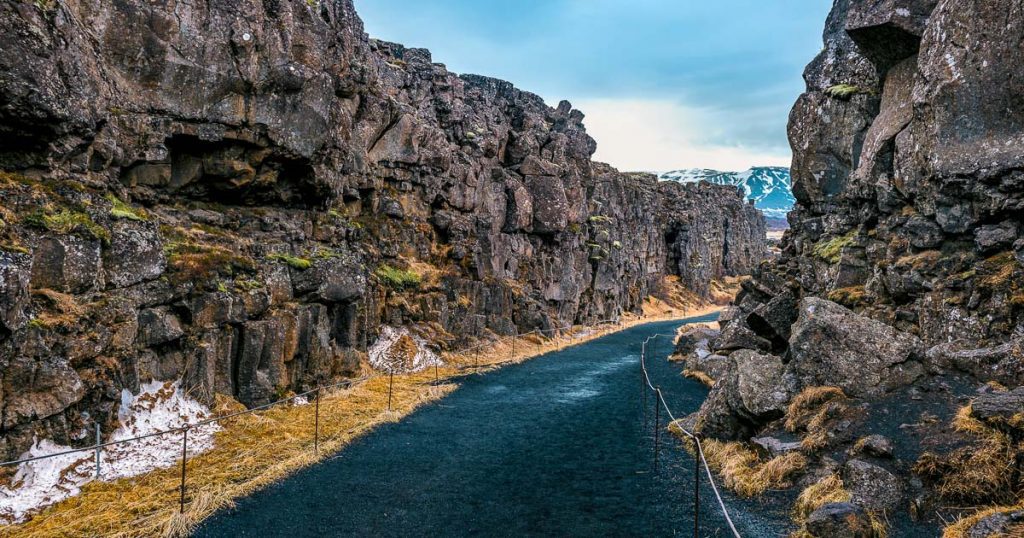
Thingvellir National Park lies 40 km Northeast of Reykjavík and is one of the most important places in Iceland’s history. The beautiful views and landscape is a perfect backdrop for the brilliant Northern Lights.
Kirkjufell
In the Western side of Iceland is the peninsula of Snæfellsnes. On the North coast of Snæfellsnes lies the mountain of Kirkjufell which translates to “Church Mountain” and makes the backdrop of the fishing town of Grundarfjöròur.
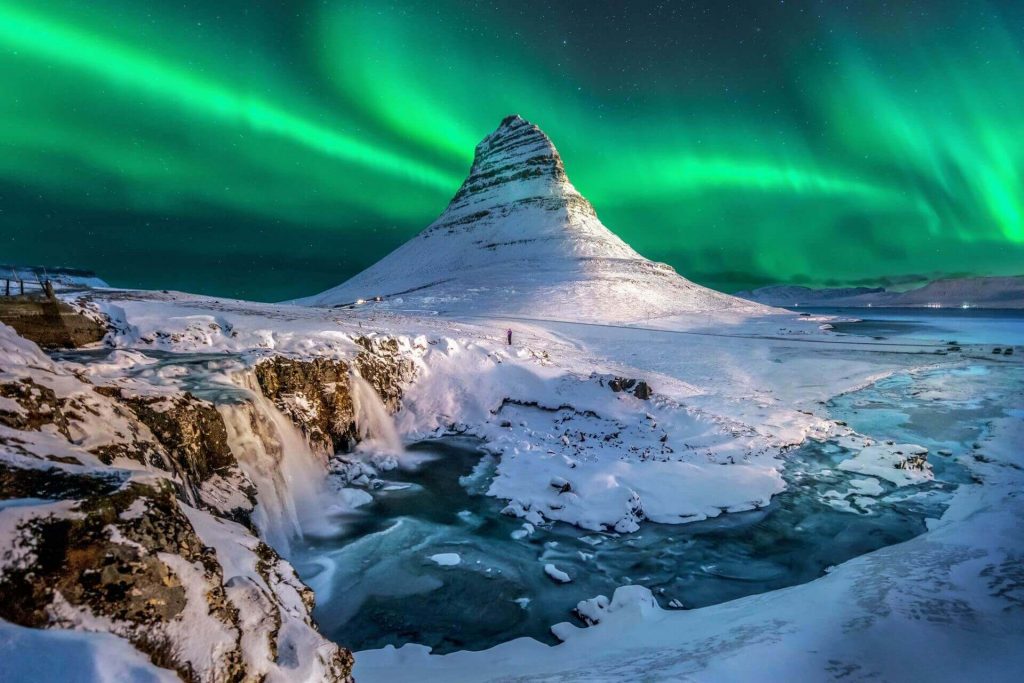
You might have seen this mountain before, even if you had never heard the difficult names of places in Iceland. The Kirkjufell mountain was extensively featured in Game of Thrones. “That’s what I saw in the fire. A mountain like an arrow head.”, Sandor Clegane can be heard saying. Yes, Kirkjufell is that Mountain and it’s more mesmerizing, more awe-inspiring when you see it in real life. The presence of the Kirkjufellsfoss waterfall makes it even more mythical.
Kirkjufell is a prime location for seeing aurora because of its Northern location. It is also around a 2-hour drive from the capital city and you can find a lot of guided tours to Kirkjufell. The town of Grundarfjöròur is nearby which makes lodging and flooding quite hassle-free. However, this is quite a popular spot with tourists so you might want to visit in times that it is not teeming with visitors.
Siglufjörour
Siglufjörour is the Northernmost town in Iceland that you can reach through the land. For someone trying to visit Iceland to see the Northern Lights, it doesn’t get any geographically better than Siglufjörour. This small fishing town lies at the very end of a fjord in Troll Peninsula.

The town is famous for fishing and is also known as the “herring capital of Iceland”. There are loads of activities to do during the day time like checking out the local Herring Era Museum, or local brewery, ko kayaking in the fjord.
For a sight at the jaw-dropping Northern lights, you will need to get a bit north of the Peninsula away from the city lights. Make your timing right as from the 9th of June the sun shines here all through midnight and this continues for a month. The best time is from September to April. Choose a clear night, have a look at the local aurora forecast, and drive to nearby viewpoints. However, caution is required as the roads run along steep cliffs.
The village of Vîk and Reynisfjara beach
Vîk is a fishing village on the Southeastern side of Iceland. In fact, this is the most South you could go to Iceland. It’s a small village of 300 but is quite a popular stop in Iceland’s famous South Coast Tours. If you don’t want a tour package, you could also rent your own car and get here as it is only 180 kilometers away from Reykjavík which is around 3 hour drive.
Reynisfjara beach lies close to the village and also can be accessed easily through the Ring Road. Because the population here is so less and being away from the light pollution of the city both the village of Vík í Myrdal and particularly the black beach of Reynisfjara provides a stunning location to watch the Northern lights.
However, the Atlantic waves here are known to be violent and strong and aren’t to be taken lightly. Even on incredibly still days, the waves travel deep inland in a deceptive way.
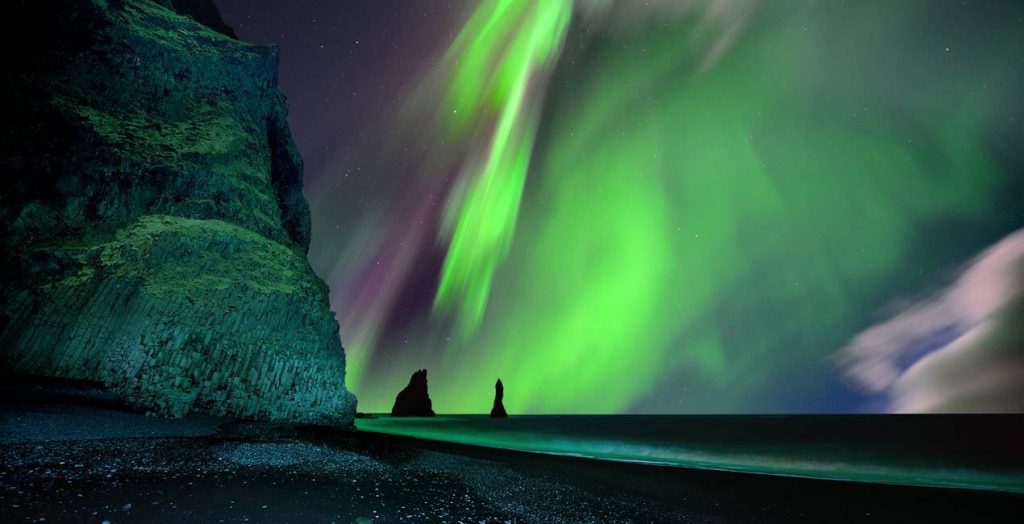
Jökulsárlón
I would suggest that you keep Jökulsárlón on your list of places to visit in Iceland whatever the reason. Jökulsárlón is a glacial lake formed after the Breiõamerkurjökull glacier started receding from the Atlantic ocean. This leads to the formation of the “Diamond Beach” nearby. The icebergs break up from the glacier and drop into the lagoon. The waves from the North Atlantic crash onto them making them smooth and polished and then wash them to the nearby Breidamerkursandur which has jet black sand. The fragments of polished icebergs on jet black sand make it look like a diamond mine.
Located in the Southeast of Iceland in the Vatnajökull National Park lies the glacial lagoon of Jökulsárlón, when reflected with the Northern Lights, gives you a feeling of being inside a kaleidoscope. Truly a mesmerizing sight.
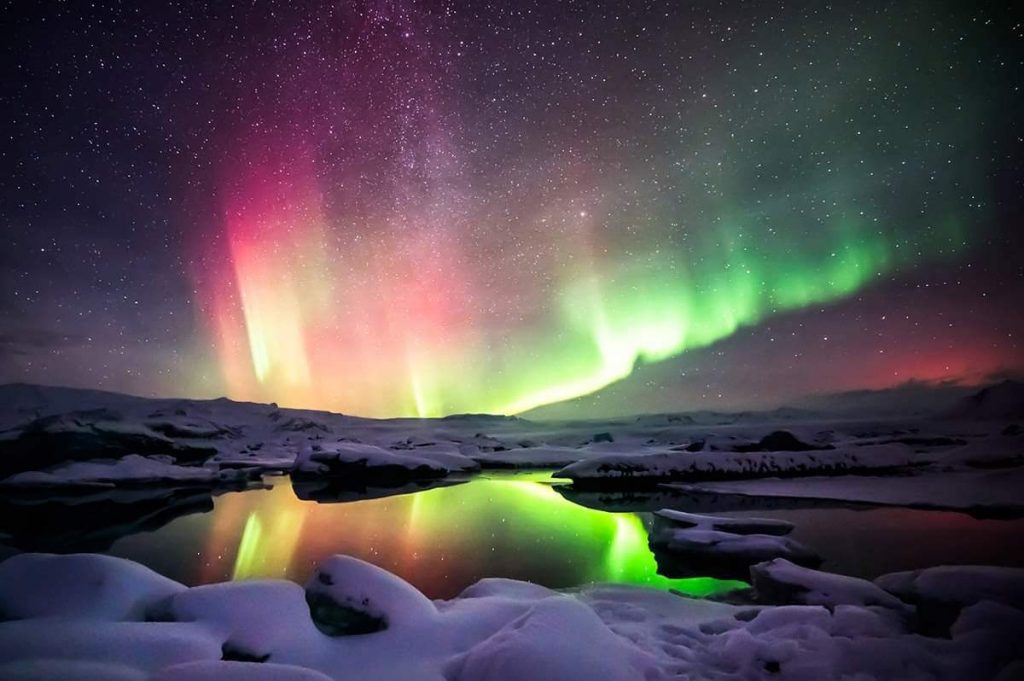
Norway
Where to see them in Norway?
Tromsø
Tromsø often called The Paris of the North is a vibrant city in the north of Norway and offers numerous activities and sightseeing for you other than seeing the Northern lights. You can at times see the northern lights even from downtown Tromsø. The town offers numerous sky bars and slightly outside the city is Mount Storsteinen, with a panoramic view.
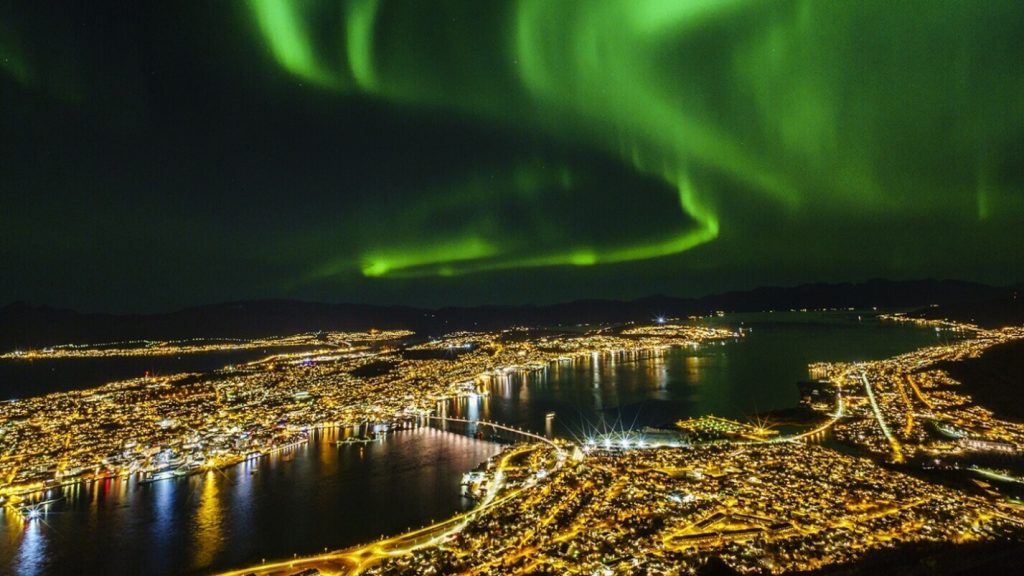
Lofoten
Lofoten islands are famous for the Skrei cod fishing and the island consists of postcard-perfect small fishing villages. The island, lying under the auroral oval is one of the best places on earth to see the northern lights.
Senja
Senja is Norway’s second biggest island and lies in the North of the country. You can reach here through-plane from Oslo or a boat trip from Tromsø. This place offers you serenity mixed with adventure tourism like skiing and plenty of hotels and restaurants to stay in.
Svalbard
Lying at equal distances from the North Pole and Norway, Svalbard is an archipelago that lies in the Arctic Ocean.
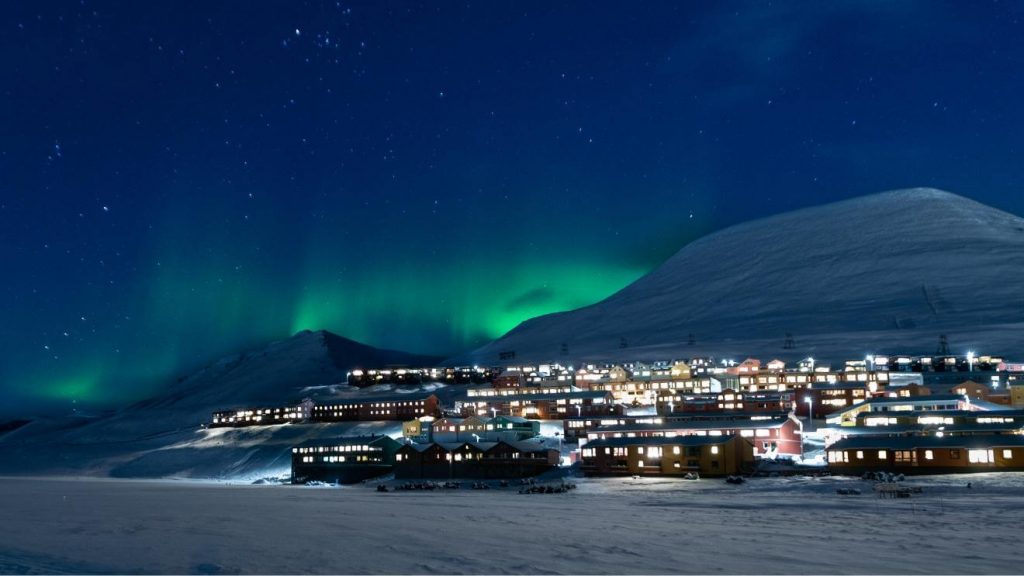
Photo: The long Polar Nights in Svalbard are perfect for seeing Northern lights.
For most of the people around the world, it may sound a bit crazy but Svalbard has never-ending days from early spring to autumn. While from November to the last of January Svalbard has no daylight, a phenomenon we call Polar Night. It is here in the long Polar Nights where you can catch a glimpse of Aurora borealis even during the day, the only place on Earth that this happens. While at night, there is no better place where you have a better chance of catching the Northern lights streak across the sky.
Other places to see them in Norway include Alta, North Cape, and Hammerfest.
Sweden
Where to see them in Sweden?
Sweden is a lengthy country. One tip of it lies closer to mainland Europe while the Northern parts lie in the Auroral Zone. The Northern part of Sweden is called Lapland and this is the best area to see the aurora borealis.
Abisko
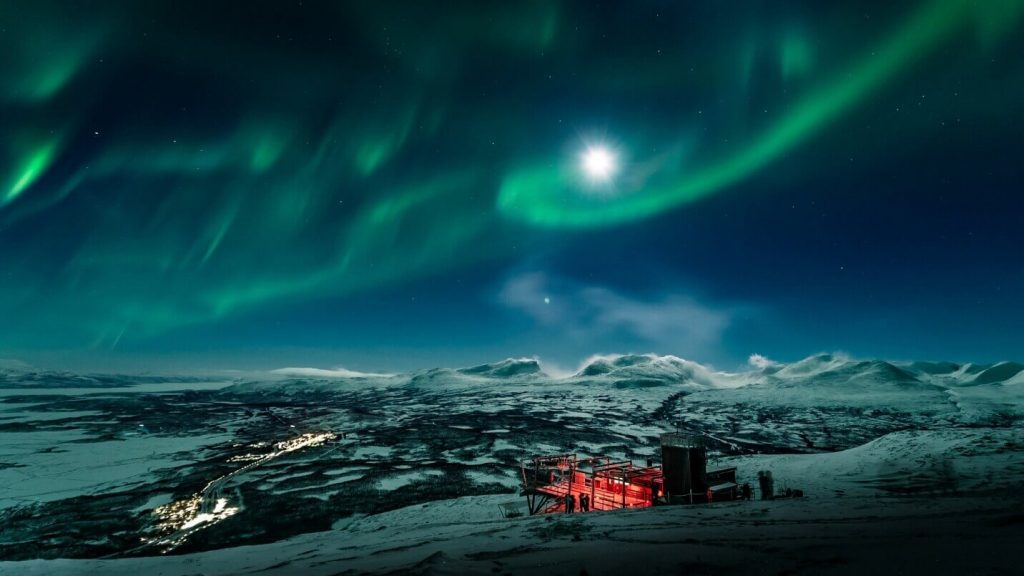
Head down to the Abisko National Park which also encloses the Abisko Aurora Sky Station lying underneath the auroral oval. This is one of the best locations in the whole world to see the northern lights.
The town of Kiruna. From the Esrange Space Centre to Camp Ripan, you can see Northern lights almost anywhere in Kiruna.
Porjus. A UNESCO World Heritage Site and located near two national parks, Porjus is an incredible place to see the northern lights. I mean, you can barely miss it here because they have webcams set up to track the lights!
The home to the world’s first Ice Hotel, Jukkasjärvi. Lying close to the river Torne, this is a perfect place to see the northern lights.
Finland
Where to see them in Finland?
Perhaps not as famous as Norway or Sweden, Finland is heaven for skywatchers with its small population and greater chances of seeing the Northern Lights.
Rovaniemi
Lying seep in the Finnish Lapland, Rovaniemi is the official home of Santa Claus. Along with other activities, places like Arctic Treehouse Hotel and Santa’s Igloos Arctic Circle are hotels where you can stay and watch the northern lights at night.
Saariselkä
The barren and high landscape of Saariselkä is probably different from any other site on this list due to its topography. It’s a popular tourist destination and with almost 200 sightings of Northern lights per year, you couldn’t be in a better place for the sky watch. Slightly outside Saariselkä is the small village of Ivalo which also offers places like Aurora Village cabin for sightseeing.
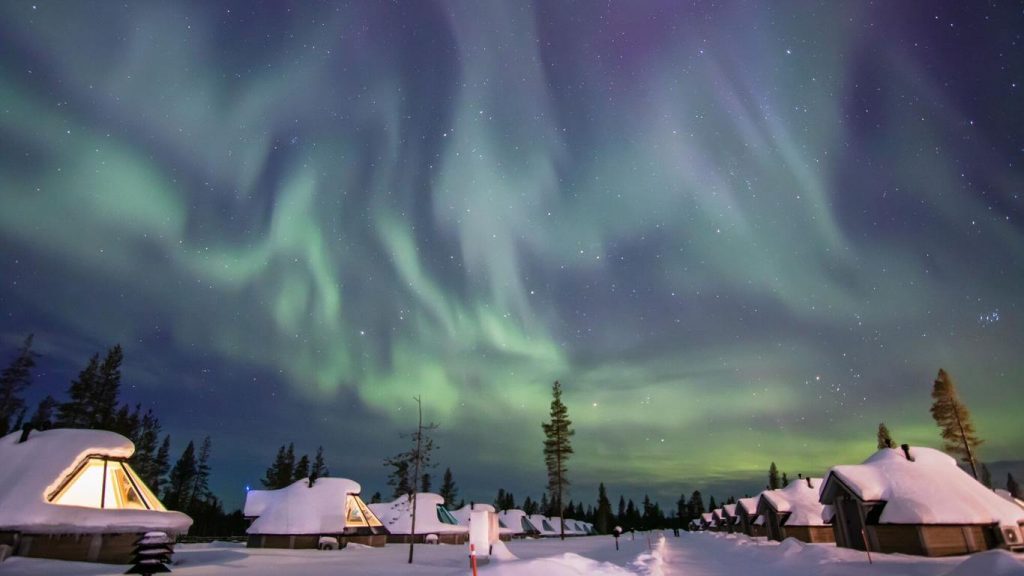
Ylläs
Located in Kolari, 115 km north of the Finnish Lapland, Ylläs is also home to Pallas National Park. The village here shuts its lights off at night for a better view of the Northern lights.

Other places to see them in Finland are the remote Kemi, Kakslauttanen and Levi.
Canada
Where to see them in Canada?
Yellowknife Canada
Yellowknife lies in the Northwestern Territory of Canada. In fact, it is the capital and the only city in the Northwest. Only 400 km south of the arctic circle and lying on the shores of Great Slave Lake, Yellowknife offers tours like Aurora Village for people seeking to see the majestic light show.

Greenland
Where to see them in Greenland?
Unlike Norway or Sweden, Greenland demands some hard work to reach. But it is also something that is exciting about visiting Greenland to see the Northern lights. Greenland has a small population which would mean very less light pollution. Moat parts of Greenland also lie above the Arctic Circle which makes it one of the most suitable places to see the Northern lights.
Kangerlussuaq
On top of any list of the best places to see the Northern Lights in Greenland is always Kangerlussuaq. That is mostly because Kangerlussuaq has Greenland’s largest commercial airport and most visitors arrive here through Denmark in less than 5 hours of flight.

Nuuk
Nuuk is Greenland’s capital. It’s an urban area with the largest population density in Greenland and its streets are lined with lamps. And yet, this remains one of the best places in Greenland to see the northern lights. In fact, its urban life, shops, and streets make it a good place to travel and see the lights at night.

Other great places where you are almost guaranteed to see them in Greenland are Ilulissat and Sisimut.